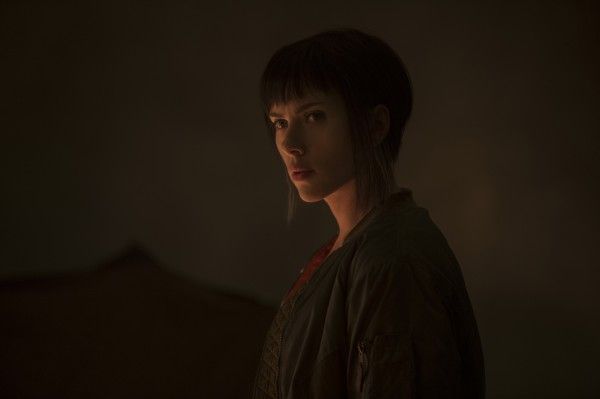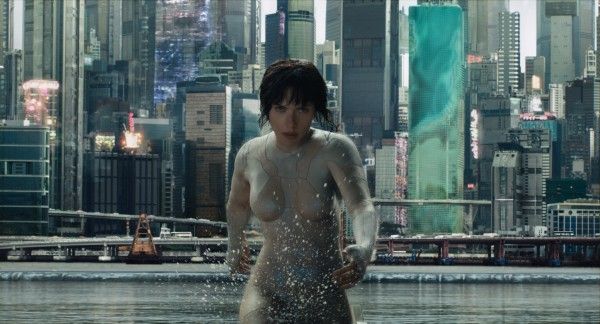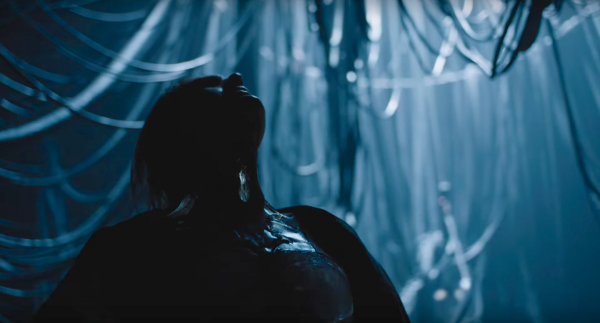When Scarlett Johansson was originally cast to lead the live-action adaptation of Ghost in the Shell, there were complaints that the movie was whitewashing its lead role. In the manga and anime, the lead character is Major Motoko Kusanagi, but the live-action version changed it to Major Mira Killian
The conventional wisdom argued that in order to fund a blockbuster film, they needed a “name” like Johansson. To be fair, Johansson is one of the few female stars that can open an action film. The 2014 film Lucy, which is based on nothing except a misunderstanding of how the human brain works, opened to $43 million and went on to gross $463 million worldwide. That being said, studios have never balked at casting white, nothingburger actors to lead their movies, which is how we get stuck with folks like Sam Worthington, Jai Courtney, and Garrett Hedlund. Paramount is a studio that needed Johansson’s name recognition for Ghost in the Shell, but seemed oddly okay to put Ben-Hur on the shoulders of Jack Huston, a fine actor but one who had never carried a movie before.
So the opportunity that could have come to a Japanese actress like Rinko Kikuchi or Tao Okamoto instead went to Johansson, arguably the safer bet financially, but inconsistent with how studios approach other blockbuster films. But watching Ghost in the Shell, I was struck by how Johansson’s casting is just the tip of the iceberg in the film’s unsettling treatment of race.
[Spoilers ahead for Ghost in the Shell]
What’s striking throughout the film is that director Rupert Sanders wants to set his film in a futuristic Tokyo, happily latches on to imagery from the anime and manga that was inspired by modern Tokyo, and then populates the majority of the film with non-Japanese actors. In terms of the main cast, the only major characters played by Japanese actors are Major’s boss Aramaki (“Beat” Takeshi Kitano), her fellow agent Saito (Yutaka Izumihara), and Hairi (Kaori Momoi), a woman whose daughter disappeared. Beyond that, there are some nameless henchmen and a handful of background performers, and that’s really all you see of Japanese people in a film that’s set in Japan.
Sanders wanted to give his film an international look, and while I appreciate the casting of folks like Pilou Asbæk (Denmark), Danusia Samal (born in London but of Kurdish and Polish descent), Chin Han (Singapore), Lasarus Ratuere (Australia), and Anamaria Marinca (Romania), that’s still a majority of white people in a film that’s based in Japan. So why have it take place in Tokyo at all? If it’s the future, why not go the route of past scripts of Akira and move the setting from “Neo-Tokyo” to “Neo-Manhattan” or just avoid naming the location?
The answer seems to be that Sanders wants all of the Japanese aesthetic with none of the people. The film wants to separate the culture and the population because while the culture is cool, casting Japanese actors into more than two roles is apparently too much of a hurdle. The result is a setting that’s constantly distracting as you wonder not only how far into the future Ghost in the Shell is supposed to be, but what exactly happened to reduce Japanese people to a minority in their own country (a country that is currently so homogeneous that its population is currently 98.5% Japanese).
But it gets so much worse.
The movie opens with the Major on a gurney. She has the same height, build, and even hairstyle as what we see on her robot body, so we’re led to assume that the “shell” was made in the image of Major’s original body. However, when Major goes to investigate her true past, she eventually meets up with Hairi, the woman who lost her daughter. Major learns that the past she was told by Hanka—that her parents were killed in a terrorist attack and she barely survived the incident—is a lie.
It turns out that Major Mira Killian was originally a young, Japanese woman named Motoko (Kaori Yamamoto), and the terrorist she’s been hunting, Kuze (Michael Pitt), used to be a guy named “Hideo”. They were both abducted by Hanka and experimented upon. Kuze was a previous test and Major is the “perfected” version.
From a plot perspective, you can just make out what they were going for. Hanka couldn’t make Major look like Motoko, or else her mother and other people she knew would recognize her. Hanka had to change her appearance.
But if you think about that for more than half a second, that still makes no sense because someone, somewhere at Hanka had to say something like, “You know, we should keep everything—same height, build, even the hairstyle, but I would really like it if she could be Caucasian.” And it happened more than once! Kuze was formerly a guy named Hideo (traditionally a Japanese name), and once again they’re like, “This is all well and good, but can we make the shell a white person?”
In a sharper, more subversive script, Ghost in the Shell could be about the festishization of Western culture and destructive white standards of beauty, but Ghost in the Shell is not that movie. Time and again, it’s a film that puts white people above all else, and does so thoughtlessly. It’s a film where whiteness is not only the default, but in fact meant to override Japanese people. Japan is meant to provide what’s cool—from the source material to the setting—but in the hands of Rupert Sanders’ Ghost in the Shell, white people are deemed to be superior because of the color of their skin.





